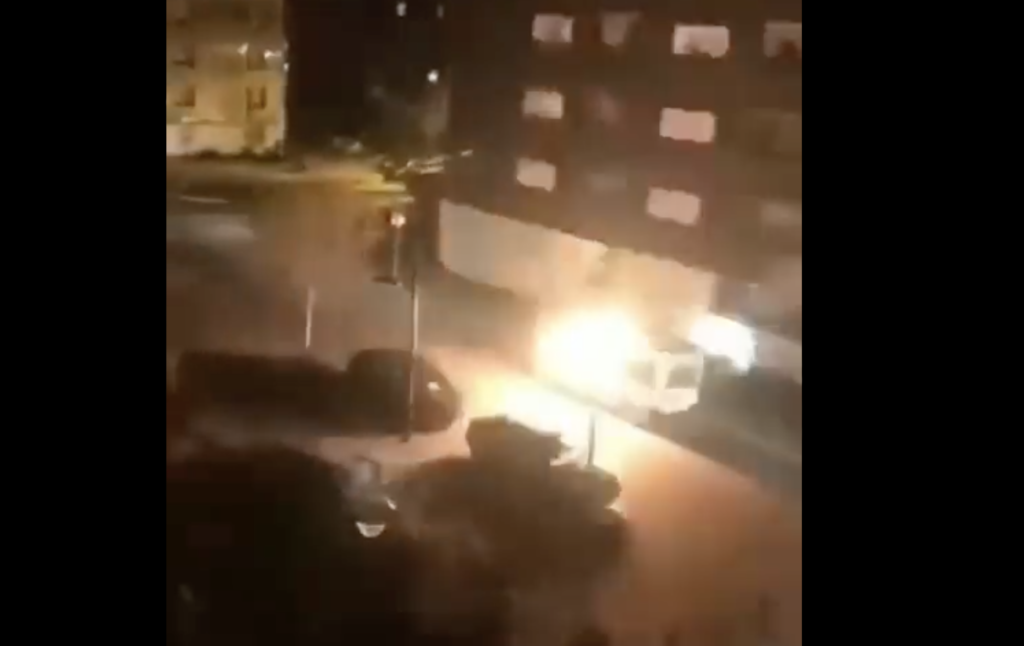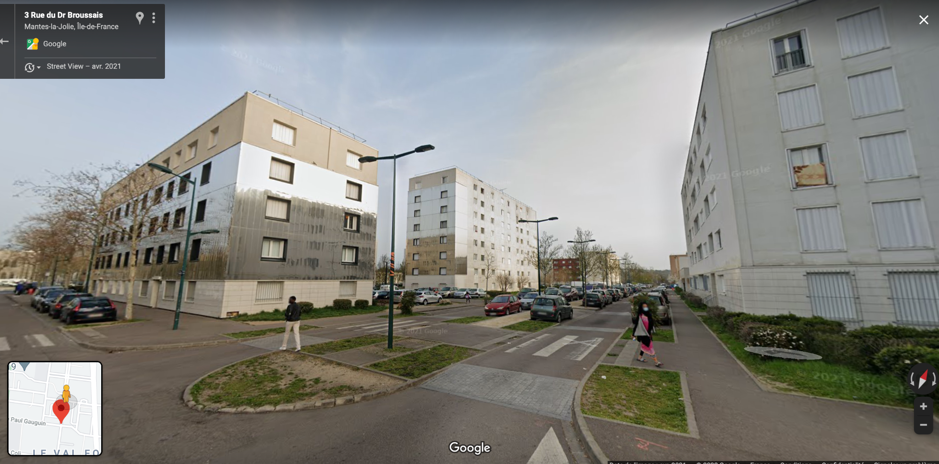
On January 3rd, 2022, a video shared on Twitter by identitarian activist Damien Rieu, circulated widely on social networks and was viewed more than ten thousand times. It showed an altercation between police and rioters in Mante-La-Jolie. Our investigation demonstrates that this footage was not taken recently. On the contrary, it has been running for several years. We have traced this sequence, going back to the day and place where it was shot.
The video published by Damien Rieu goes back to November 2017, when unrest and violence took hold of Mantes-la-Jolie, a popular neighborhood in this Yvelines town. Thanks to numerous press clippings, we managed to trace and contextualize this event.
First viewing
Le Parisien, among other media, covered the events and publish the video fort the first time on November 20th, 2017.



In November 2017, the neighborhood went up in flames after the supposed violent questioning of a 27-year-old citizen. That is when the video first went viral. In 2019, it reappeared briefly on Twitter, before resurfacing in September 2020. That year, New Year’s Eve was disrupted by a few incidents, including in Mantes-la-Jolie, as mentioned in an article by actu.fr.
The video, shared once again at 12:39 on January 3 in a Telegram was distributed in a private conversation that centralizes several videos of violence or urban fights. The conversation credited « cpasdeslol” for a video that was however several years old.
It was then taken up in the minutes that followed by extreme right-wing and militant sites that took advantage of the opportunity to share these images, under the pretext that they had been filmed at the time of the disturbances of the night of the 31st. This is the case of the far-right website Français-de-souche, referring to a molotov cocktail « a few days after a real ambush » in Mantes-la-Jolie, in the Parisian suburbs, and also of the website Rutube.
« Scum in action – Sinister daily »
The story is interesting on several levels. Firstly because the video was shared a day after the real outbreaks of violence thus benefiting from the exposure given by the sequence. It also took advantage of the fact that it was integrated to a video hosted by Youtube. Going back to the source of this video, we realize that it was published on the platform the day before, by an account created last October. This account is called “Cassandre” – maybe an allusion to Greek mythology, usually praised by right-wing activists – it is by 6 people, and has only published a few videos. Above all, its proprietor is anonymous .
Moreover, this video was published in « unlisted » mode. An unlisted Youtube video simply means that videos with this setting will only be seen by people who have the link to this video.The advantage is that you can only share the link with the audience that has interests in that specific content. In this case, it is very likely that this option has been activated to share it with communities close to the extreme right.
Another point to note is that the video was also taken up on January 3rd by the association “Touche pas à mon flic”, whose spokesman Bruno Attal, is known for his strong identity positions. The group, which intends to « defend the media, fight racism wherever it comes from, and defend the presumption of innocence », broadcasted the video with the comment « Scum in action – Sinister daily ». Again, three and a half years after the facts.
Tom Masson, Philippe Peyre & Théo Putavy
BLACK BOX
With just a few clicks, it is rather easy to prove that it is fake news. But understanding the mechanisms by which fake news is spread is much more interesting. With a few keywords in the Twitter search bar, we quickly identified that the video was from – at least – 2019. But again, no context.
However, the caption of the 2019 video mentioned several streets and neighbourhoods in Mantes-la-Jolie. That’s when Google became our friend. With the names of streets mentioned in previous incidents, we identified recognizable buildings in the video. We found these buildings on Google Maps, not far from the streets mentioned in the articles.
We then found the actu.fr article showing screenshots of this video in November 2017. We had found the original event. Using Twitter’s advanced search, we sifted through all the tweets about Mantes-la-Jolie at that time and found its first appearance on the social network. Moreover, this search allowed us to corroborate the facts with articles from Le Parisien, the same day as actu.fr.
Yes, it’s fake news. But how can a 4-year-old video suddenly resurface on all the far-right networks? One small detail caught our attention. On the 2022 video, a blue sticker with « cpadeslol » written on it was added to the video. We were vaguely familiar with this account, which shares videos of events and/or violence. Searching on Twitter, we found the account, but no trace of the video. Neither did subscribing to the Snapchat account. We then had to join the Telegram feed of « cpadeslol ». That’s where we found the video, in the midst of many, many others and sometimes openly racist comments. By comparing the hours of publication on the various far-right sites, we saw that fake news spreads at breakneck speed and that anything goes to serve its cause.
